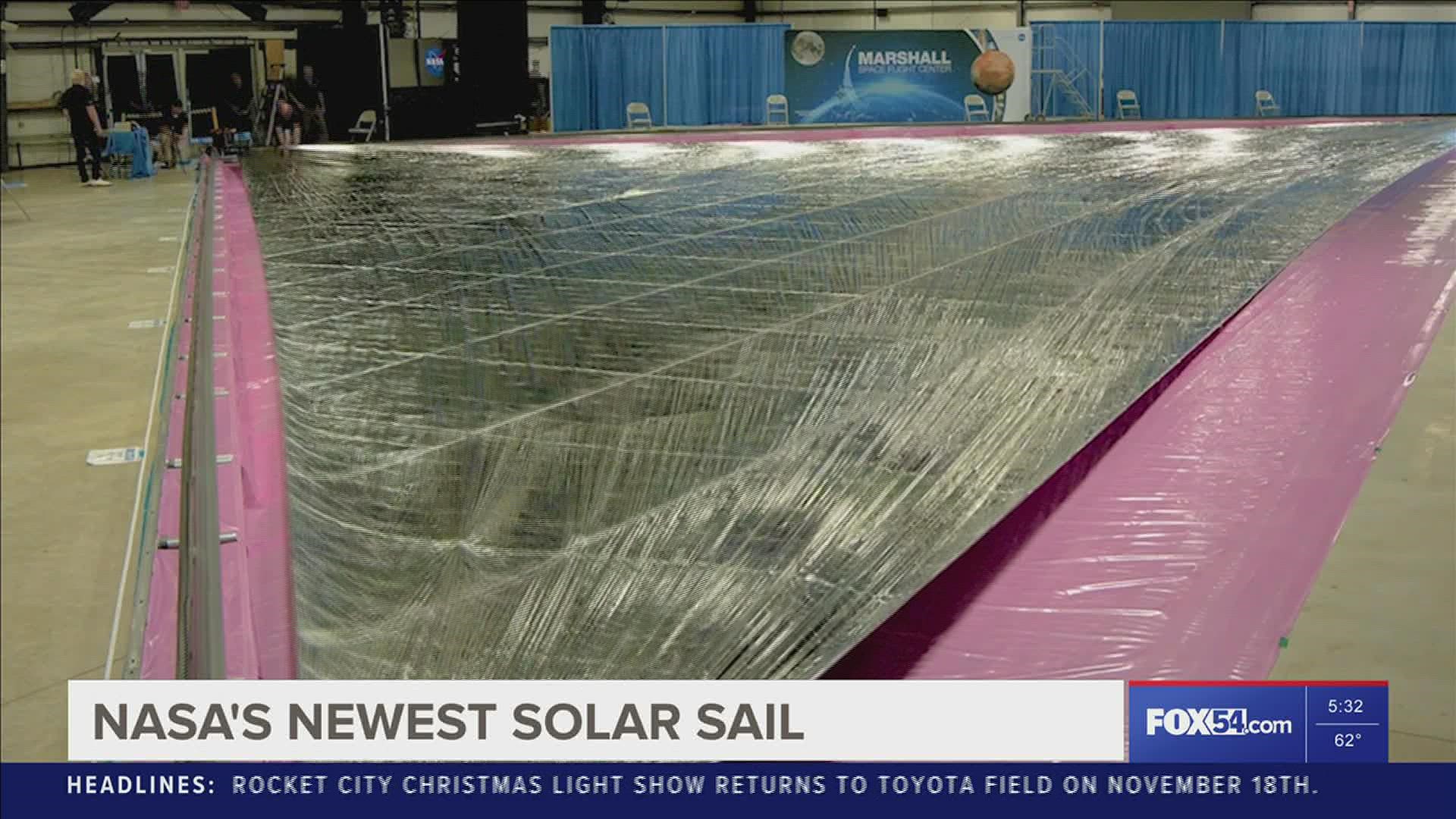HUNTSVILLE, Ala. — Cruising through space on sunlight was the focus at Marshall Space Flight Center where NASA's newest solar sail was on display. The sail is a full-scale prototype of one of the four sections, or quadrants, designed for the solar cruiser spacecraft. Today, Les Johnson, principal investigator for NASA gave an explanation on how it all works.
"What you see behind me is one fourth of the next generation sail is called solar cruiser," he stated. "When fully deployed in space, it will be four times larger than what you see behind me. It's a thin film, plastic coated with aluminum, optimized to reflect sunlight and as light reflects from the sail, it pushes on it."
Solar sails use the force of light – not rocket fuel – to fly in deep space. They get a gentle, constant push from sunlight particles, or photons, hitting their giant reflective surfaces. Over time, solar sails can travel farther than traditional spacecraft, faster, and maybe one day reach other stars.
NASA and industry partners used two 100-foot lightweight composite booms to unfurl the 4,300-square-foot (400-square-meter) sail quadrant for the first time on Oct. 13, making it the largest solar sail quadrant ever deployed. The fully deployed sail covers an area larger than the surface of a tennis court with an aluminum-coated plastic material that’s thinner than a human hair.
"The nice thing about a solar sail is the sun's always shining and as long as you're out in space, you get continuous low thrust," Johnson states."Over time, this can accelerate you to some pretty high velocities and gives you the capability to maneuver in space indefinitely without fuel."
Mike Gold, Redwire Space’s executive vice president for civil space and external affairs was on hand to share why he thinks the solar sail will help how we understand things down here on earth better.
"So, we're geared towards Helio physics right now to understand the sun," he stated. "The weather is beautiful outside right now, might not be beautiful in space, and with solar cruiser will be able to understand weather in space which can impact your cell phone satellites our daily lives. Also, for national security, our national security is becoming more and more dependent on space and what this technology will enable is the ability to loiter and be able to collect data, both scientific and relative to what potential adversaries are doing. That will be extremely important for the future."

